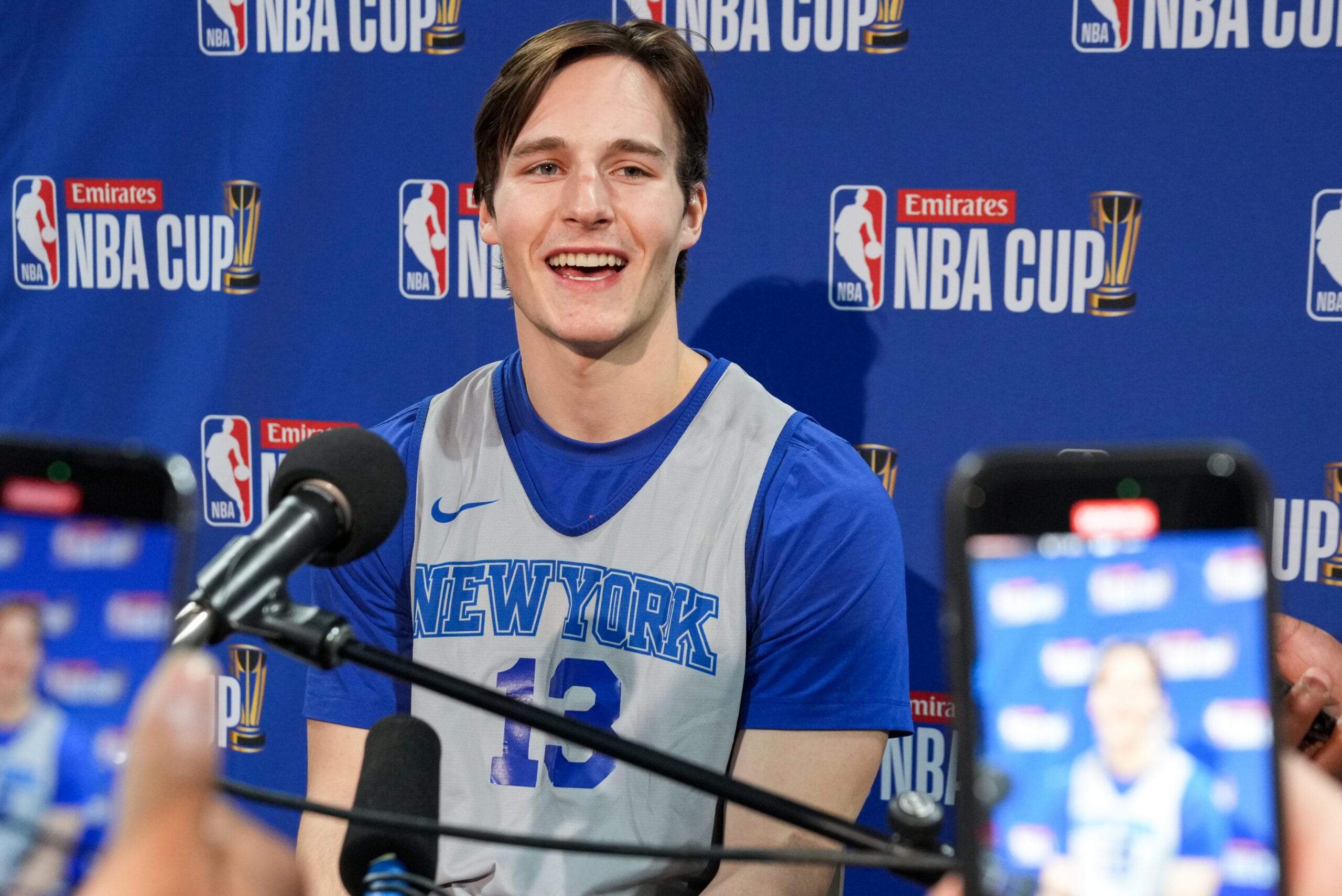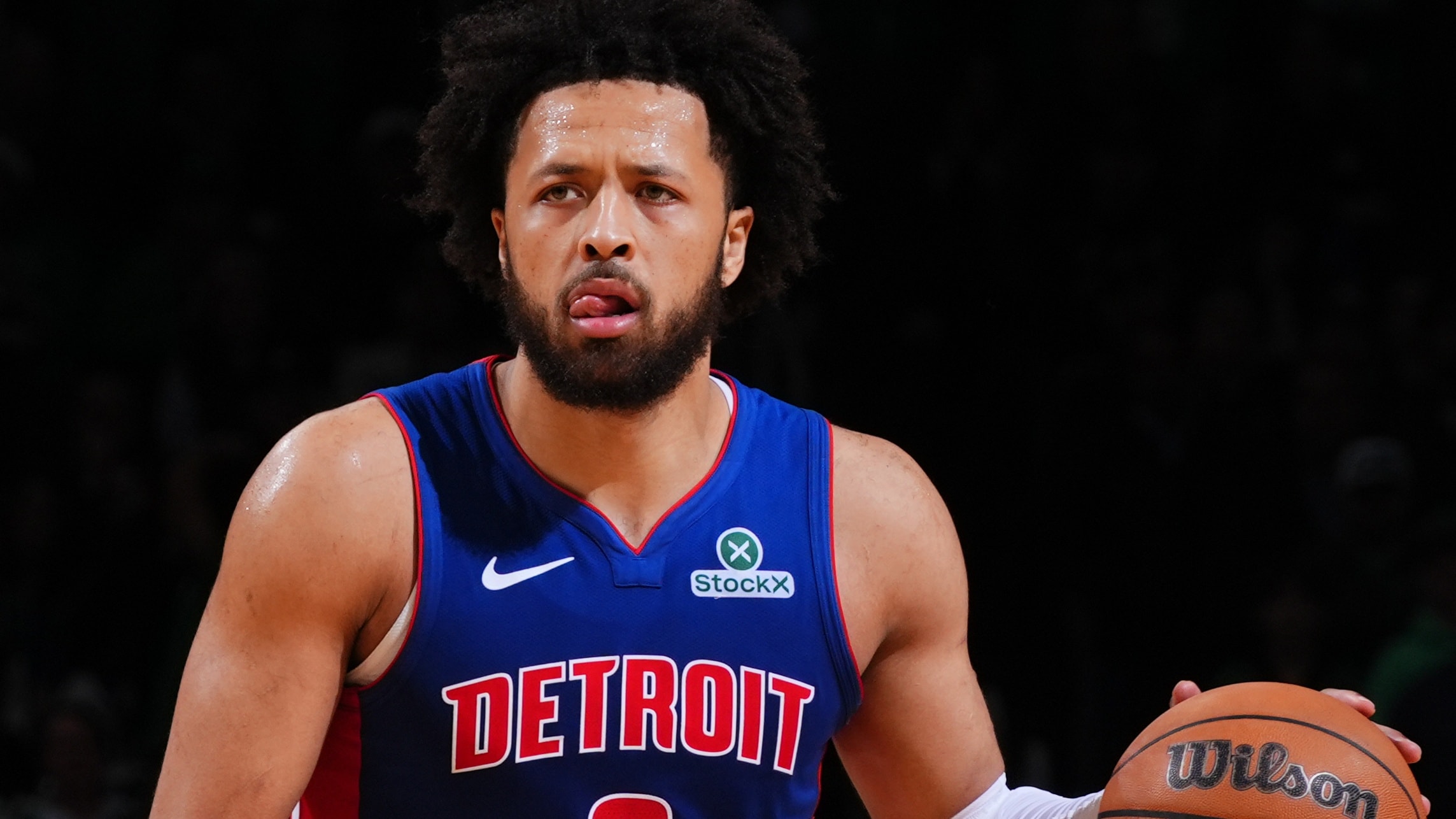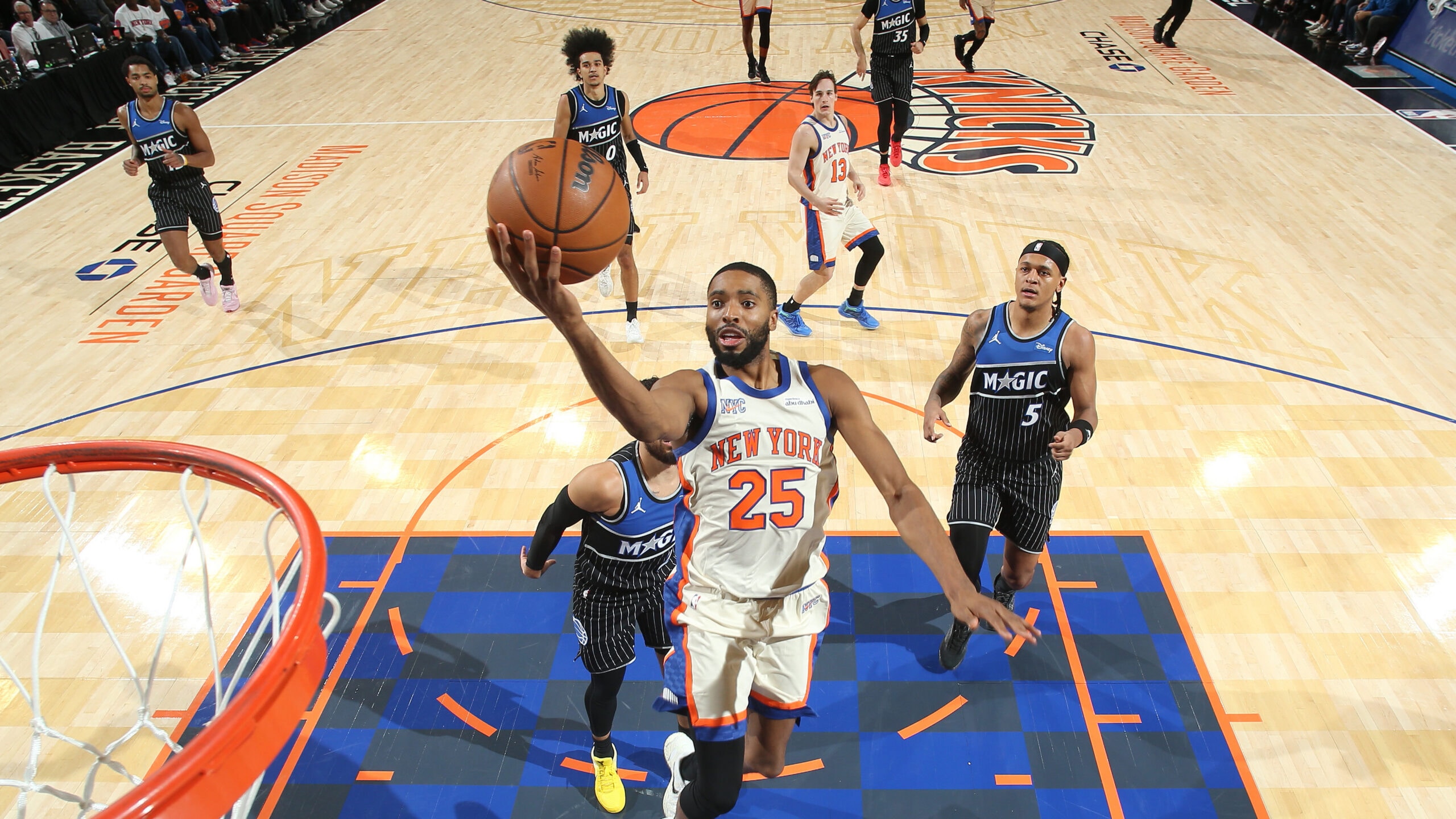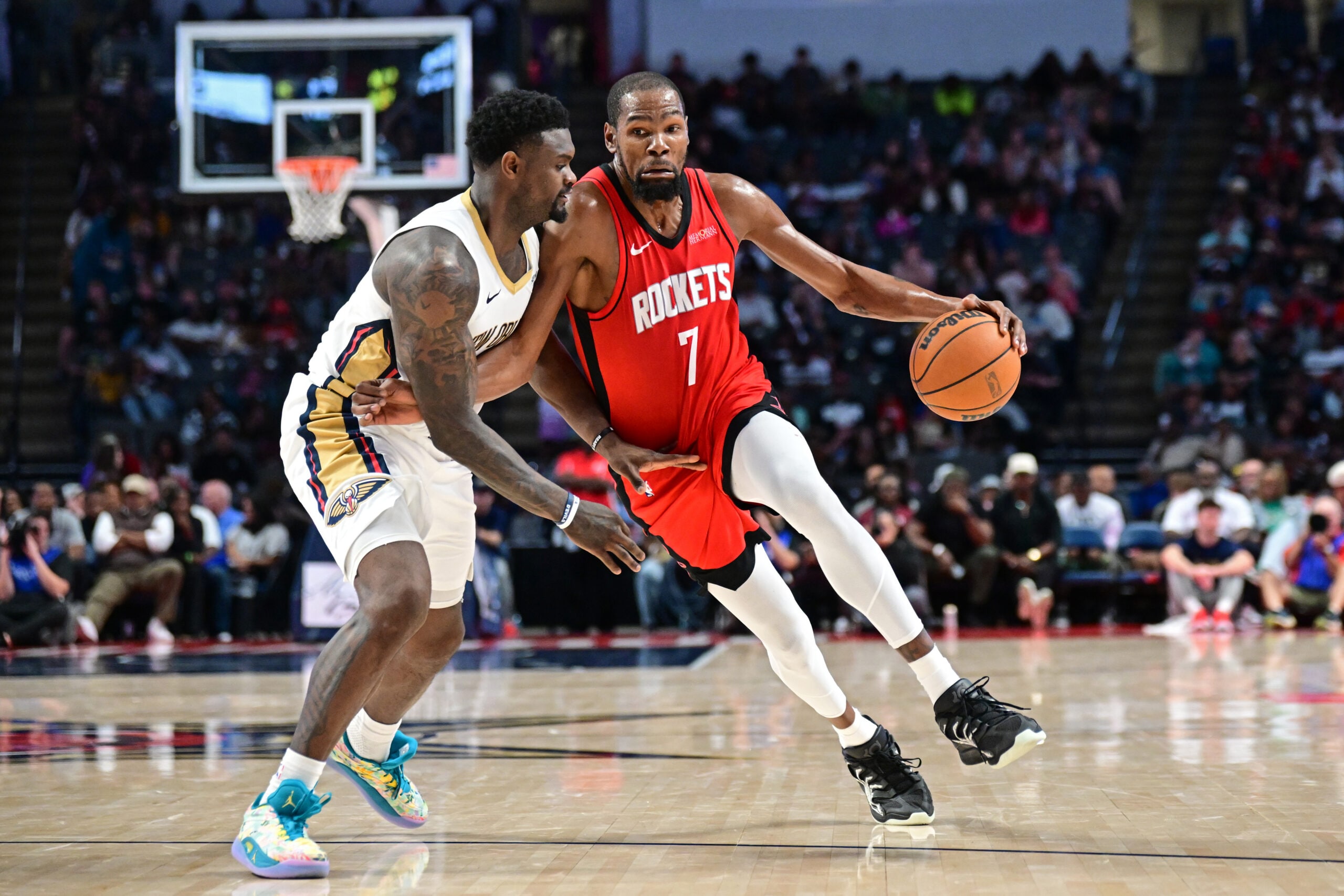
Down three games to one in the Eastern Conference finals, the Boston Celtics were in a desperate situation on Friday. And with his team having scored just twice on its first seven possessions, head coach Brad Stevens didn’t hesitate to replace starting center Daniel Theis with Gordon Hayward less than four minutes into Game 5. If this was the last game of the Celtics’ season, they were going to go out with their best five guys on the floor for heavy minutes.
Except that didn’t happen. That group was on the floor for less than three minutes (in which it was outscored by six points), and Game 5 wasn’t the last of the Celtics’ season. Boston’s best-five lineup struggled, but the Celtics’ centers — Theis and Enes Kanter — played big roles in a 121-108 victory over the Miami Heat that forced a Game 6 on Sunday (7:30 p.m. ET, ESPN).
This win didn’t play out the same as the Celtics’ win in Game 3, a wire-to-wire victory in which the Heat struggled offensively at the start. Boston trailed Game 5 by as many as 12 points in each of the first two periods.
But after the Celtics turned things around with a 41-25 third quarter and put the Heat away with a similarly efficient fourth, some key numbers looked a lot like they did in that win last Saturday.
First, the Celtics’ two wins have been the two fastest-paced games of the series. And second, the two wins have come with 60 and 56 points in the paint, respectively.
Those two things are not unrelated.
Game 5 was the Celtics’ most efficient offensive performance (121 points on 102 possessions) since Game 2 of the first round, which is pretty remarkable given how the first seven minutes went. After scoring five points on their first 14 possessions of the game (trying the best-five lineup and then quickly giving up on it), the Celtics scored 116 points on 88 possessions (a rate of 132 per 100) thereafter. They really flipped the game around with five minutes of great defense at the start of the third quarter, but their offense had been doing pretty well already.
On the run
It has been noted often in this space that early offense is good offense. This season, league-wide effective field goal percentage was 60% in the first six seconds of the shot clock, 53% in the middle 12 seconds, and just 44% in the last six seconds, according to Second Spectrum tracking.
Transition offense was key for the Heat in Game 1, but they’ve slowed down since then. The Celtics, meanwhile, have sped up. After totaling 17 shots in the first six seconds of the shot clock over the first two games, the Celtics have averaged 17 over the last three.
Game 5 came with 12 buckets on 20 shots (the most for either team in the series) in the first six seconds. Some of those (including the Jayson Tatum and-one that really put the game away) were easy fast breaks off live-ball turnovers. But the Celtics also pushed off of both missed and made shots, taking advantage of a Miami defense that was too often too slow to match up.
Here are some examples…
Play 1: The Celtics start slow after a Jae Crowder miss, but there’s only one defender in front of Marcus Smart and Jaylen Brown running up the right side of the floor. So Tatum passes ahead and Smart gets around Duncan Robinson.
Play 2: There’s some pointing, but the Heat actually don’t match up after a make and Kemba Walker passes ahead to Brown for a dunk.
Play 3: The Celtics don’t seem to have numbers after this live-ball turnover, but Brown just blows by Robinson down the right side.
Play 4: Again, the Celtics don’t have numbers. But Walker gets the ball into the frontcourt quickly, Robinson has to pick him up, and he draws a foul on an early-iso drive.
Play 5: After a Smart rebound, Walker has the ball at mid-court with 22 on the shot clock, and Brown is again racing down the right side to give the Celtics their first lead of the game.
Play 6: The Heat have bodies in front of Walker after he pushes off a rebound. But again, there’s only one guy guarding two on the right side, and Walker slings a pass to a wide-open Tatum.
Busting the zone
After playing 46 possessions of zone two nights earlier, the Heat didn’t use it on Friday until the Celtics were taking the ball out of bounds with 9:14 to go in the third quarter. Earlier in the series, there was a working theory that Hayward’s return would allow Boston to play small and skilled against the zone. But Theis was a key factor, both with and without the ball, as the Celtics had their best performance against the zone in Game 5.
Shots from 10-14 feet accounted for just 28 (7%) of Theis’ 426 field goal attempts in the regular season. But he made half of those 28 shots and on that first zone possession on Friday, he didn’t hesitate to shoot from just inside the free-throw line.
Here are some examples of Theis helping the Celtics bust the Miami zone…
Play 1: On that first zone possession, Walker swings the ball to Smart and gets screens from both Theis (screening Crowder) and Tatum (screening Robinson). Both defenders fight through the screens to get out to Walker, who is 28 feet from the basket without the ball. That leaves Theis wide open at the free-throw line and he drains the jumper.
Play 2: With Walker dribbling up the left side of the floor, Theis sets a high and early screen on the inside of Jimmy Butler, allowing Walker to step into a pull-up jumper from the foul line.
Play 3: Theis is a little slower with this screen, but he changes the angle (back to the baseline) and Walker steps into a pull-up 3.
Play 4: After setting another inside screen for Smart, Theis rolls into the middle of the paint. Both Andre Iguodala and Bam Adebayo are in the vicinity on the catch, but when Theis pivots, Iguodala retreats to Smart, and Adebayo clears the paint. So Theis dribbles back into the paint and lofts a floater before Adebayo can get back.
The Celtics have still been a little less efficient against the zone (1.11 points per possession) than they’ve been otherwise (1.16). They get to the basket and get fouled more against man-to-man. But that “otherwise” number includes transition possessions and would be lower if we isolated half-court possessions against man.
| vs. Zone | Other | |||||
|---|---|---|---|---|---|---|
| Game | Poss. | PTS | PTS/Poss | Poss. | PTS | PTS/Poss |
| 1 | 14 | 16 | 1.14 | 85 | 98 | 1.15 |
| 2 | 29 | 26 | 0.90 | 65 | 75 | 1.15 |
| 3 | 16 | 20 | 1.25 | 84 | 97 | 1.15 |
| 4 | 46 | 50 | 1.09 | 50 | 59 | 1.18 |
| 5 | 9 | 14 | 1.56 | 93 | 107 | 1.15 |
| TOTAL | 114 | 126 | 1.11 | 377 | 436 | 1.16 |
Screen and post, screen and crash
None of Boston’s eight shots against the zone on Friday were layups or dunks. But those 14 points on nine possessions took Miami out of the it. And when the Heat went back to man-to-man, the Celtics took Adebayo away from the basket.
The Celtics’ 21 restricted-area buckets in Game 3 came mostly with Adebayo on the perimeter. The Celtics often got Adebayo to switch onto their guards, and then they attacked elsewhere, with the Heat’s big man not in position to protect the rim.
Game 5 (20 restricted area buckets) was similar, except there was more of the Celtics’ big men taking advantage of the ensuing mismatches after an Adebayo switch. Here are some examples…
Play 1: Adebayo switches a Kanter screen for Walker, so Kanter takes Butler into the post and gets a point-blank jump hook.
Play 2: Theis sets another one of those high-and-early screens for Tatum. Adebayo switches it, and Theis takes Butler into the post. A Walker screen temporarily gets Adebayo off of Tatum who misses a deep 3. Theis gets rebounding position on Butler and follows up the miss.
Play 3: Another high-and-early screen for Walker gets the same switch. Hayward misses a jumper, but Theis taps out the miss, ducks in against Butler, and draws a foul.
Play 4: Another Adebayo switch allows Theis to box out Iguodala, who commits both a loose-ball foul and a technical foul on the rebound.
Has the tide turned?
This is kind of the opposite of the Toronto-Boston series, where both teams were continually trying to figure out how to score against the other. After the Celtics and Raptors combined to score just 103.3 points per 100 possessions in the conference semis, the Celtics and Heat have combined to score 113.4 per 100 in this series.
After Game 4, it appeared that Boston wasn’t sure how to defend Miami’s pick-and-rolls and dribble hand-offs. But the Cs did away with trapping Butler, came with much better ball pressure, and didn’t once allow Adebayo to roll all the way to the rim in Game 5.
And now, it seems the Heat have to figure out how they want to defend the Celtics. After that Kanter post-up vs. Butler in the second quarter, we actually saw Adebayo in “drop” coverage, allowing Walker to step into a pull-up 3. And Theis and Kanter didn’t just punish switches. Kanter had a roll-man layup in that second-quarter, while Theis opened up a pair of second-half 3s (one, two) by pulling a defender into the paint when he rolled to the rim.
The Heat have shot just 30.1% from 3-point range in the series, while the Celtics have shot worse from beyond the arc in their two wins than they have in their three losses. The story of the two wins has been their ability to get to the basket.
The zone is the best way to keep Adebayo protected, but (though it produced 11 of Boston’s 19 turnovers in Game 5) Game 2 was the only game in which the Celtics really struggled against it. Preventing layups and dunks starts in transition (better focus and communication can clean up some of the issues in the transition examples above), but there are still some questions to be answered with Miami’s half-court defense.
Game 6 on Sunday (7:30 p.m. ET, ESPN) is both an opportunity to answer those questions and another chance to reach The Finals.
* * *
John Schuhmann is a senior stats analyst for NBA.com. You can e-mail him here, find his archive here and follow him on Twitter.
The views on this page do not necessarily reflect the views of the NBA, its clubs or Turner Broadcasting.










